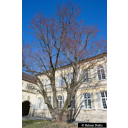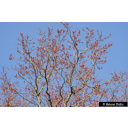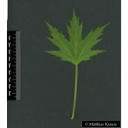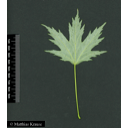Useful information about the taxon (species, subspecies, variety...)
Acer saccharinum L. 1753
Sapindaceae
(APG IV)silver maple, soft maple, water maple
Taxon concept: Plants of the World Online
Distribution: native to eastern North America
Acer saccharinum L. - Accepted: Acer saccharinum L. bei Zander 2008; Familie: Aceraceae (Zander 2008)Acer saccharinum L. - Accepted: Acer saccharinum L. bei The Plant List (2010); Familie: Sapindaceae (APG III)Acer saccharinum L. - Accepted: Acer saccharinum L. bei World Flora Online - APG IV (Angiosperms); Familie: Sapindaceae (World Flora Online - APG IV (Angiosperms))Acer saccharinum L. - Accepted: Acer saccharinum L. bei The Plant List (2014), version 1.1; Familie: Sapindaceae (APG IV)Acer saccharinum L. - Accepted: Acer saccharinum L. bei The Plant List (2010); Familie: Sapindaceae (APG IV)Acer saccharinum L. - Accepted: Acer saccharinum L. bei BfN Checklist Flora DE; Familie: Sapindaceae (APG IV)
- Flowers
- monoecious or dioecious tree
- Flower ecology
- animal-pollinated (zoophilous)
- Life form
- tree
- Foliage persistence
- deciduous
- Fruits
- winged nutlets (samaras) 3,5-5 cm in length
- Fruit ecology
- wind-dispersed (anemochorous) or water-dispersed (hydrochorous)
- Soil conditions
- preferentially on moist, well-drained, alluvial soils
- Root type
- shallow root system
- Natural occurrence (habitat)
- wetlands, riparian forests (e.g. elm-ash-cottonwood type forests), shores of rivers or lakes, swamps
- Vegetation typ and synecology (plant community)
- temperate, mixed mesophytic deciduous/riparian forests
- Constraints according moisture
- can tolerate prolonged periods of inundation; not much drought resistant
- Constraints according habitat
- susceptible to fire and pollutants
- Usage
- as an ornamental tree in gardens and parks; used as a crop plant for the production of sugar (maple syrup) and furniture; food source for bees and other insects
Global Biodiversity Information Facilty (GBIF). Online Publication: www.gbif.org; Pritsch, Günter et al. (1985): Bienenweide.. Neumann-Neudamm, Melsungen; Pritsch, Günter et al. (2007): 200 Trachtpflanzen erkennen und bewerten.. Kosmos, Stuttgart; Schick, B. & Spürgin, A. (1997): Die Bienenweide. Eugen Ulmer Verlag, Stuttgart, Auflage: 4., völlig neubearb. u. erw. A., 216 S. 978-3800174188.;
Diese Webseite verwendet Google Maps, um Karten und Standorte von Pflanzen in den Hohenheimer Gärten anzuzeigen. Dadurch werden unter Umständen Daten an Google weitergeleitet, was mit einer Verarbeitung Ihrer personenbezogenen Daten verbunden sein kann. Die Datenschutzerklärung von Google finden Sie hier: Datenschutzerklärung von Google
| Sex | Standort | Accession number | Planting year | Donation | IPEN | Lat. | Long. |
|---|




